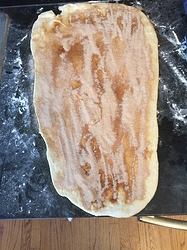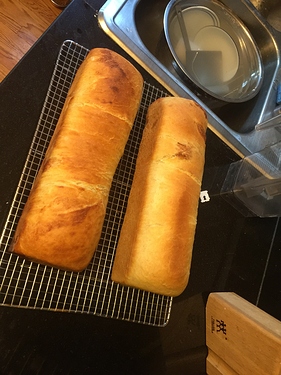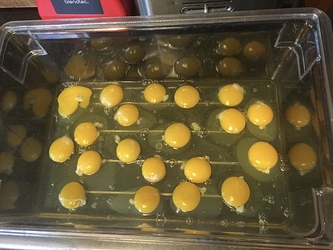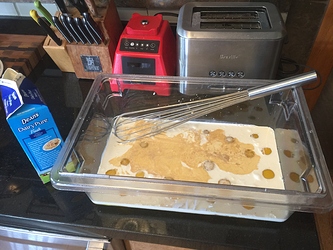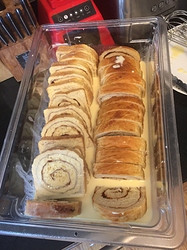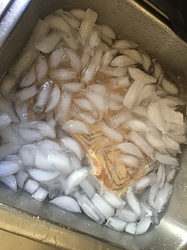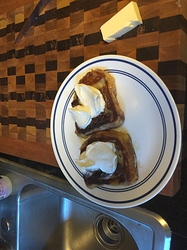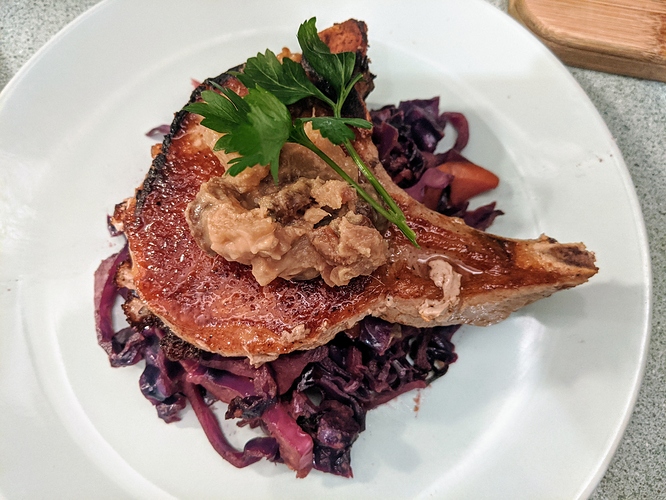I continue to experiment with/against pizza doughs. This time went back to the Ur-Pizza… the Flattened Dough Ne Pizza from which my original attempts all spawned.
That’s right. Matt’s Skull and Roses Review.
500g flour,
20ml warm water with 1/2 tsp sugar and 2 tsp yeast “until foamy” (“It should be way foamier than that don’t use powdered sugar”)
4 tbsp olive oil (“or just a glug, just eyeball it, really”)
1 tsp salt (“or however much you want… look I wrote that down, and I may have made a mistake!”)
100 ml of warm water (“Maybe add a bit more if you need… but you shouldn’t if you didn’t use the wrong sugar… it shouldn’t be this goopy”)
Mix by hand, let rise for 1.5 hours.
I replaced 100g of flour with whole wheat (out of laziness, since I only had 400g of plain flour upstairs and didn’t want to go downstairs to refill the flour container… jokes on me, since I had to do it anyway to flour my work surface to roll out the dough).
End result was fine. I’d go so far as to say “good”, although I don’t think I added enough water (have I mentioned that I’m really bad with “just do this until it’s right” recipes?). But still content with the results. Just moz, tomato, and pepperoni for toppings this time around (and tomato sauce from a tin, since I have never seen tomato sauce in a box or tube).
Forgot to take pictures. But it looked and tasted like pizza, even if it was only a 7.5/10 on the yummy scale.
